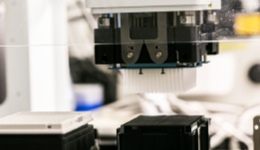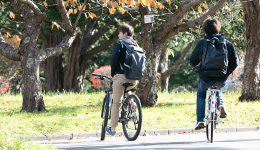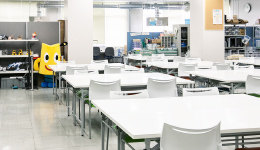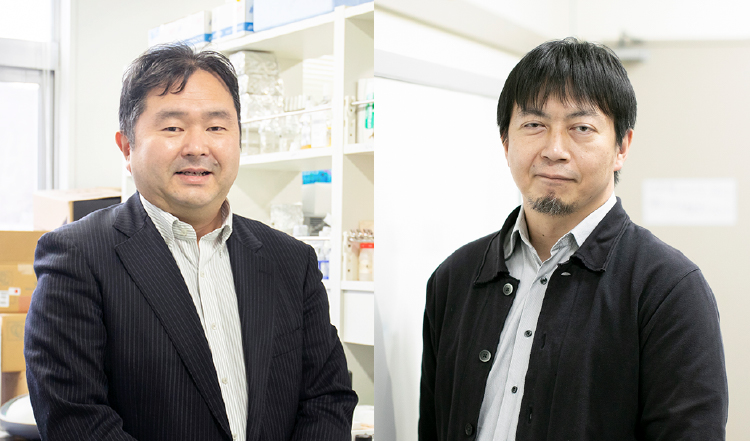Special Research Interview Feature
"Space Mobility"
× "Muroran Institute of Technology"
From the time when people looked up at the sky and imagined space, we have now evolved into an era where satellites are deployed in space and bring various information to Earth.
Muroran Institute of Technology conducts research and development of aerospace engines,
We are conducting research that supports people's lives, such as designing cities and transportation using various big data.
Here, we spoke with two professors who conduct research related to two types of space: space and earth.
MEMBER
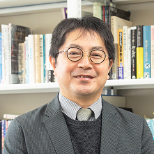
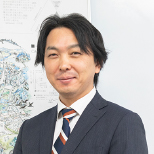
This time, the theme is "Space Connection".
I would like to hear about your research and your thoughts on it.
Returning energy from space to earth
Professor Utsumi: I am researching in the field of aerospace systems engineering, and Professor Arimura is researching in the field of urban transportation design, but these two are connected by the keyword "mobile bodies." Until now, whether by car, train, or on foot, people have moved two-dimensionally on the surface of the Earth.
Then, in the 20th century, the next step for humans was to shift to three-dimensional vehicles such as airplanes and spaceships. In 2020, SpaceX, a private American space development company founded by Elon Musk, achieved manned travel to the space station using its own rockets.
In this way, in another 10 or 20 years, space passenger planes and space planes will be realized and developed, and space will become casual. We will be having honeymoons on Mars, and undergoing physical therapy in a gravity-free environment where the body is not under stress. The country is also seriously discussing how to expand the use of space and what to do about space transportation in the future.
In the midst of this, Muro Tech opened the "Muro Tech Aerospace Plane Systems Research Center Satellite Office" in Taiki Town in October 2020. We expect that this will accelerate the development of space rockets in collaboration with Interstellar Technologies Inc., founded by Takafumi Horie, as well as experiments related to small supersonic aircraft.
Professor Arimura: In terms of surface mobility, there have been recent global attempts to integrate services such as reservations and payments across various transportation operators, such as taxis, buses, and LRT, known as MaaS (Mobility as a Service).
In recent years, advances in ICT have also led to the shift to self-driving vehicles. In 2019, Taiki Town worked with the national and local governments to conduct a long-term demonstration experiment in which townspeople actually used a self-driving bus service. If this becomes a reality, it will not only help alleviate the shortage of drivers caused by their aging, but also expand the space for people to move around by connecting to other means of transportation such as intercity buses.
However, autonomous driving is only possible with the aid of satellites that provide location information, so this is where Professor Utsumi's work in the rocket field becomes necessary. A demonstration experiment of autonomous driving was conducted in Taiki Town, and in the future, it will be seamlessly connected to rockets and other means of transportation in space in terms of mobility. This is where the two are linked through the theme of "space connection."

Professor Utsumi: We are now in an era where tens of thousands of artificial satellites are launched around the world to collect information from space. What is becoming important is how to develop infrastructure in space. For example, if wireless communication for mobile phones could be sent from space, it would eliminate the situation where radio waves cannot be connected in areas without ground antennas, such as mountainous areas and depopulated areas.
When it comes to aircraft systems, the technology and rights have been taken over by Europe and the United States, but when it comes to space, Japan must not fall behind. As I said earlier, the time will come when anyone can go into space. So, we thought we would like to create a gateway to space in Hokkaido, and that is why we are promoting the Hokkaido Spaceport Plan, which aims to create a spacecraft landing site here in Hokkaido. I believe that people will gather together and form a society, which will lead to the birth of a new culture.
Professor Arimura: In the future, habitable space for humans will expand into space, so there are connections to civil engineering, and we will benefit greatly from it.
Even though the declining population is becoming a problem these days, assistance from outer space is essential to maintaining a smart society.
I am also conducting research on big data, and most of the location information data is sent from space. It can be used to create detailed plans for urban planning, and of course it can also be applied to technologies such as autonomous driving. When location information is combined as a data base for cities, the range of application fields will expand.
On the other hand, if we do not consider how to utilize these technologies and conduct research, cities, which are spaces where people live together, will not be able to adapt to the changes of the times. We all share the idea that we should be equipped with the technology to respond to such an era when it comes.
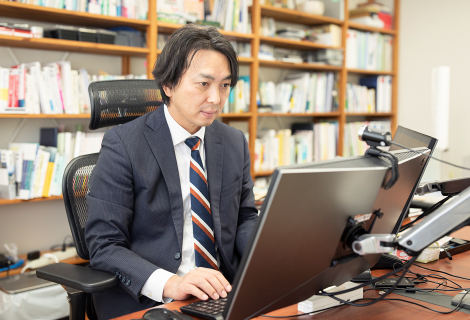
Please tell us about your future plans.
Leverage existing technology
Professor Utsumi: I am researching rocket engines, and in particular, I think that the systematic research and development of rocket turbopumps, which are a typical example of high-speed turbomachinery, is unique for a university.
We also recently announced an opportunity to demonstrate technology to deploy and measure ultra-small satellites in space, which, if successful, will be a world first. I believe that we need to disseminate such world-first technologies from Japan in the future.
Hokkaido also has vast land, making it an ideal environment for aerospace-related research and development and flight demonstrations. We would like to take advantage of these characteristics to conduct research and development with an eye toward the actual aircraft and social implementation. We would like to actively conduct joint research with private companies and others, and create innovative things from this place.
We hope to launch an artificial satellite made in Hokkaido, using a rocket developed in Hokkaido, from Hokkaido, for the people of Hokkaido. This is a launch project for a Hokkaido citizen's satellite, a Hokkaido-born satellite, that will be completed entirely in Hokkaido.
Professor Arimura: In my field of expertise, urban and transportation planning, we must consider how to respond to the declining population that is already occurring. For example, in Hokkaido, the population is expected to decline at twice the rate in the 20 years between 2020 and 2040 compared to the past 20 years up to 2020.
How can we live happily in this situation? If we use new technologies effectively, such as self-driving technology, we may be able to create a society where people can continue to live their lives even if they live far from central cities, and where it is easier for them to settle down.
On the other hand, when we look at cities, we are seeing problems such as the emergence of vacant houses due to population decline. One of the reasons for this is that during the period of high economic growth, urban areas expanded but the population began to decline, so we are also conducting research on how to make cities more compact.
We aim to solve urban and regional problems by applying big data as well as new technologies such as autonomous driving and MaaS.
Tell us what you want.


